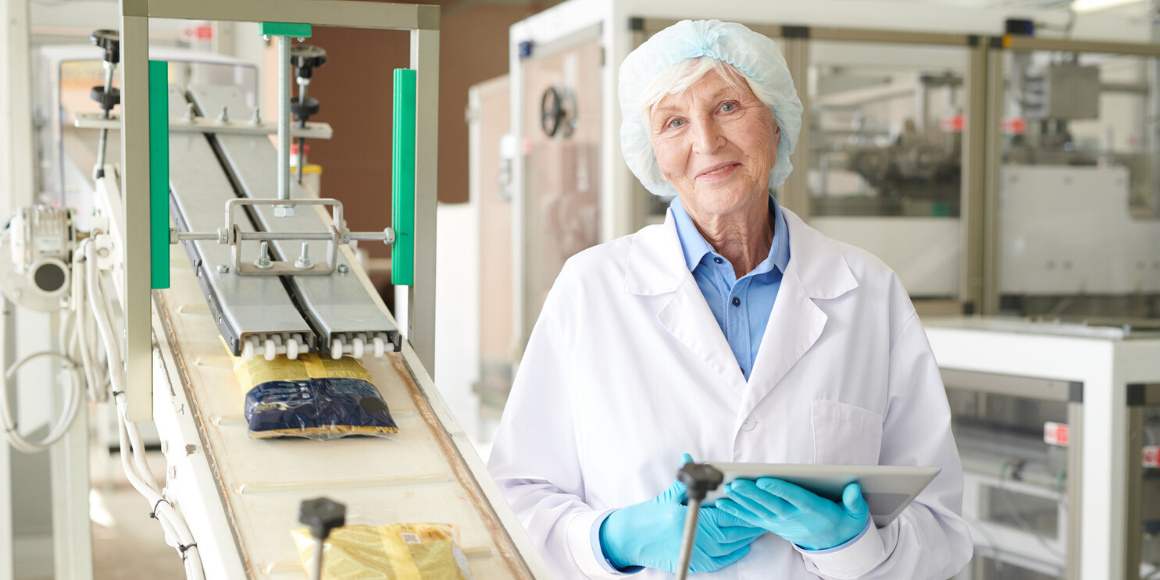Thermoforming is a key process for most meat, beverage, and bakery processors. Managing the quality of packaging and labeling provides both effective product presentation and assured preservation of products in storage, in transport, and on retailer's shelves.
An efficient packaging process is essential for manufacturers. OEE is an important performance metric that can be used to track efficiencies plant-wide, but nowhere is OEE more valuable than where it measures across a thermoforming and packaging line. To help processors achieve the highest levels of performance and the best possible values for OEE, Worximity offers a complete line of results-driven data acquisition and analysis systems. Smart Factory analytics software is ideal for tracking thermoforming productivity as well as any other manufacturing process.
What Is Thermoforming?
Thermoforming is a process for creating containers and other packaging components using heat to soften plastic sufficiently to allow it to be molded. First, a plastic sheet is clamped over a mold (drape forming) and heated to the molding temperature. This softens the plastic sufficiently to allow the part to be made. Next, the sheet is stretched over the mold, and the edges are sealed against the mold base. This begins the process of shaping the plastic. Air is then pumped out of the mold cavity (the remaining space between the mold and the plastic sheet), creating a vacuum. Atmospheric pressure then forces the plastic sheet down over the mold, causing it to conform to the mold’s pattern.
Finally, after the part is cooled sufficiently to retain its shape, it is released, trimmed, and sent to its point of use.
There are many different varieties of thermoforming processes based on this principle. Which method is used depends on many factors, including the shape of the part, type of plastic, and costs. A few process methods include drape forming, billow forming, snapback, and plug assist. Thermoforming is the packaging process of choice for many food manufacturers because of its flexibility, reliability, and cost.
Important Variables to Consider When Managing a Thermoforming Operation
Many variables must be controlled to manage a thermoforming operation. Some of these include part shape, size, draft, corner and edge radii, and surface texture and gloss. These factors must be considered and decided on early in the part/mold design phase to allow time to build suitable molds and obtain the proper equipment. Typical parts manufactured for food and bakery processors include product trays, disposable cups, lids, blister packs, and clamshell packaging.
Improving Thermoforming OEE in Food Processing
Measuring OEE at thermoforming is an excellent method of assessing the performance of the entire processing line. The packaged, labeled, and ready-to-ship final product represents the net efforts of the whole line, regardless of the performance of any specific section within the line.
Below are five tips for improving OEE values for thermoforming operations.
1. Implement Data Collection Software to Identify Problems and Opportunities
Worximity offers a complete plug-and-play system for collecting real-time operating data. Metrics such as OEE can be calculated and presented on TileBoards (dashboards). Deterioration in performance can be analyzed as soon as data begins to show problems. Changes can then be made to bring the line back into compliance with planned operations.
Worximity's systems allow managers to:
- Establish baseline performance
- Spot problems and develop solutions
- Measure downtime and causes
- Develop improvement plans based on reported data
In some cases, poor performance at thermoforming may indicate problems with upstream operations. In these situations, employees must first identify the cause of lower productivity, then develop solutions to any uncovered problems.
2. Implement Preventative Maintenance
Proper maintenance procedures are essential to ensure equipment runs smoothly and performs as expected. When there is an equipment breakdown, the subsequent maintenance procedures are crucial to getting the equipment back into production. If maintenance personnel are slow to respond, parts are not available, or other problems slow the repair of the equipment, excessive downtime results.
Capturing downtime amounts and causes is a feature of Worximity's data collection system and provides the information needed to address excessive maintenance downtime issues.
3. Engage Employees for Improvements
Employees’ cooperation is crucial to bringing about improvements to the processing lines, and it is vital to engage all employees in any improvement efforts. As part of a performance improvement program, key employees should be identified who are most likely to have a positive impact on operations. These employees may be in key positions, be leaders among workgroups, or have specialized skills. Big OEE payoffs can result from engaging key, experienced employees in improvement efforts.
4. Analyze OEE Components
Sometimes it is helpful to analyze the underlying data making up the OEE measure. By looking at each OEE component, it is often possible to identify additional areas of opportunity that may not be obvious by looking at the composite OEE alone. For example, drilling down into the “quality” component may reveal a problem with the condition of raw material upstream. By tracking down OEE issues, you can make additional improvements to end-of-line performance.
5. Analyze Process Procedures
Over time, processes are changed and procedures updated. Analyzing actual process flows and ensuring each step is value-added can uncover areas for improvement. Eliminating non-value-added steps and unnecessary activities can improve both the products and the accompanying OEE measure.
Thermoforming and packaging equipment are ubiquitous throughout the food, beverage, bakery, and pharmaceutical industries. As an end-of-line process, final packaging measures can function as a representation of the productivity of the entire line or plant. As a result, measuring OEE at final end-of-line packaging provides a rough measure of the overall line performance.
Worximity systems collect production data in real time, and performance metrics are calculated from that data and stored in the cloud. Productivity measures can then be accessed from any location via computers, laptops, or phones. This information can lead to the implementation of improvements that have a positive impact on the overall line and plant efficiencies. To learn more about how Worximity can help improve your factory OEE, contact us today.







